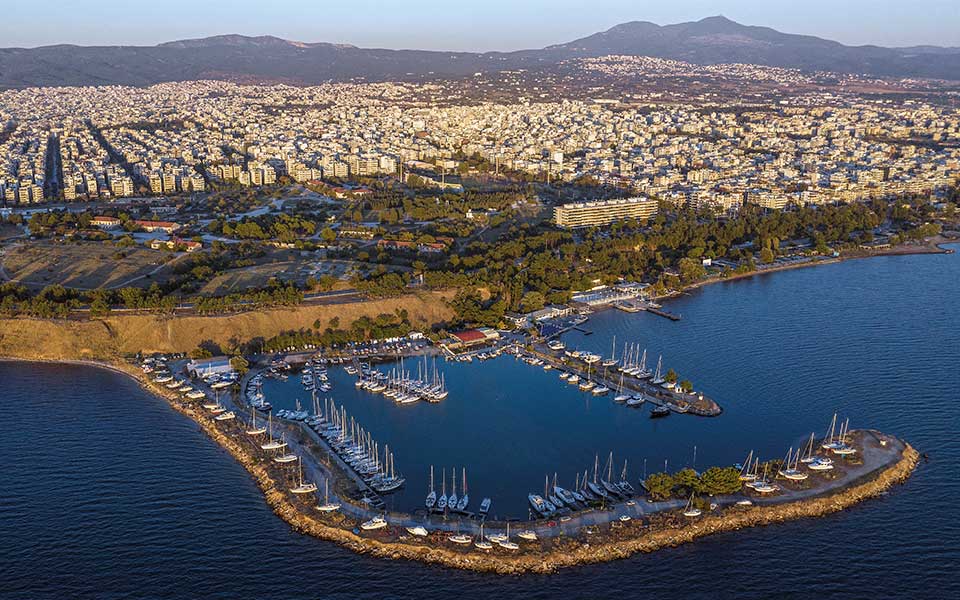It’s a weekday morning in late October at Aretsou Marina. It’s a veritable island setting, with seagulls whirling above the fishing boats of the Nea Krini Fishermen’s Association, while crews stack crates with their fresh catches, which include European barracuda and red mullet.
Most of the men, much like the association’s president Dimitris Tsipouras, are third- and fourth-generation fishermen who can trace their roots back to Smyrna and Çeşme. After the Greek-Turkish War (1919-1922), their ancestors arrived here in wooden boats and continued fishing to make ends meet. The descendants of those refugees at work here are among the few living pieces of the history of Kalamaria.
For the most part, the district on the eastern coastal “horseshoe” of Thessaloniki seems to have drawn a clear dividing line with its painful past. Essentially uninhabited until 1920, when the first refugees arrived from Kars, it soon became the new home for tens of thousands of people expelled from Pontus, Asia Minor and Eastern Thrace.
The memory of their plight is buried deep beneath the urban fabric, and only a few names of streets or bus stops betray this past.
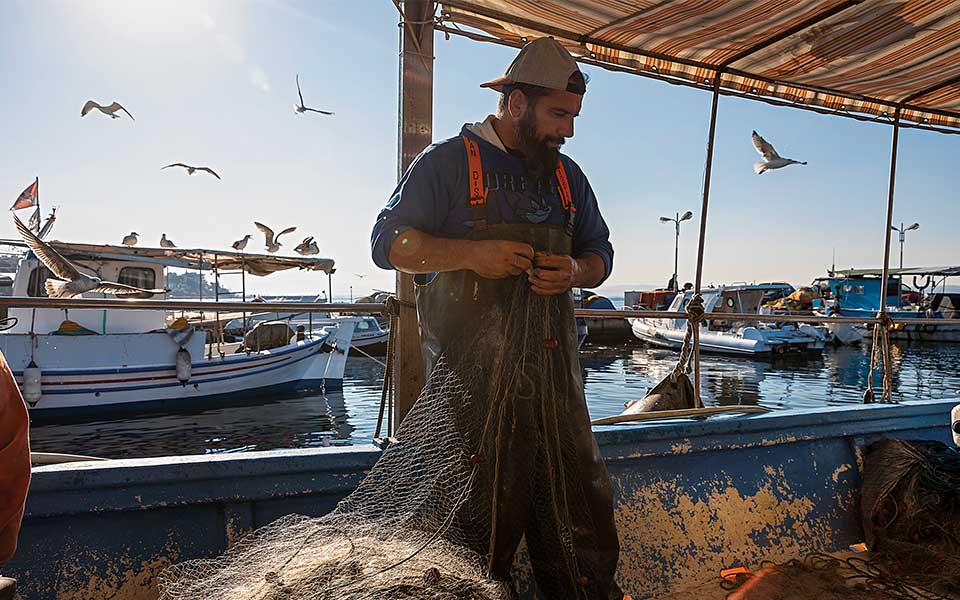
© Konstantinos Tsakalidis
For instance, when the bus turns from Hilis Street onto the coastal road, the next stop is Apolymantiria (“Disinfecting Station”).
Here, at the intersection of Ioanni Pasalidi and Nikolaou Plastira streets, stood the fenced-in facilities where newly arrived refugees would wash and their clothes would be cleaned and sterilized in boilers, from which they would would often emerge shrunken or ruined.
Even though dozens of accounts describe this hygiene “ritual,” it’s still unclear how many people were subjected to it, nor even how many refugees died due to the hardships they faced – it’s estimated that more than 22,000 people perished.
The remains of the little-known “Ellis Island of Macedonia” were torn down in 1965, and it has taken more than half a century to begin the process of declaring this spot a remembrance site.
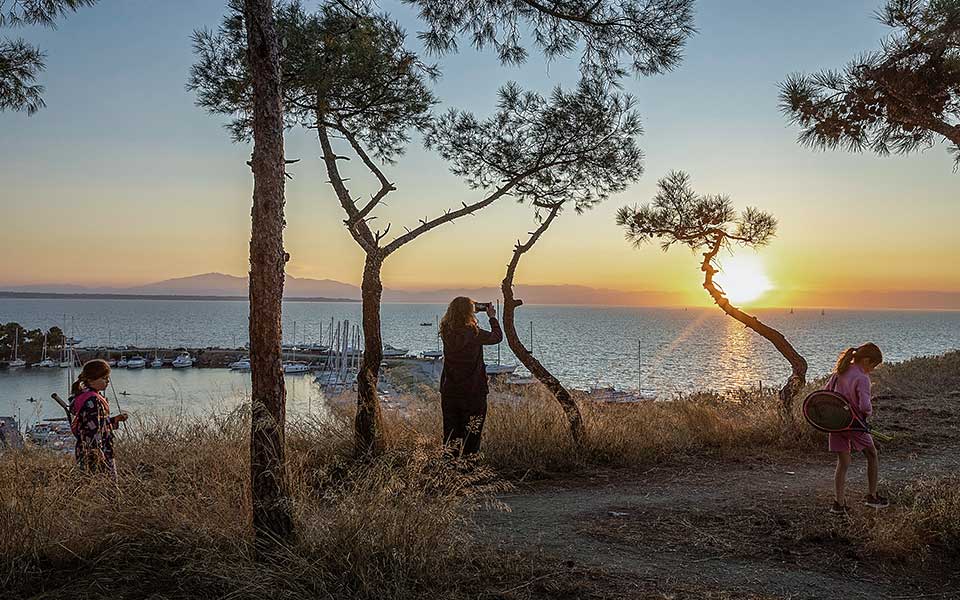
© Konstantinos Tsakalidis
The Sea Breeze
The source of Kalamaria’s charm is its advantageous position by the sea. It is the only Thessalonian municipality that boasts sandy beaches, and its coast extends over six kilometers.
Along this coastline, which begins at Cape Karabournaki (where the ruins of houses dating from 500 BC have been found) and ends at the National School of Judges in Aghios Georgios, locals and visitors take walks with their family or pets, go fishing, relax on benches while admiring amazing sunsets, go swimming or set out in sailboats.
“The difference between Kalamaria and the Nea Paralia [Thessaloniki’s New Waterfront] is that here visitors can engage directly with the sea; they have direct access,” Giannis Lambriniadis, vice-president of the Nautical Club of Thessaloniki, tells me. The club, composed of 150 rowers and 120 young sailors, is housed in a historic building designed by the great interwar-period architect Konstantinos Kapsabelis, close to the border with the municipality of Thessaloniki.
Every Sunday, at the eatery Sorokos on the club’s ground floor, regulars gather to enjoy meze that include fresh local shrimp, angler fish sautéed in tomato and feta sauce and other dishes. Across the way, in the corner of the marina with its views that stretch to Halastra across the Thermaic Gulf, is the Chapel of Aghios Nikolaos, one of the most beautiful spots to capture the sunset on camera.
A bit further down is an equally beautiful park, nestled between the Sea Scouts base and the Palataki. In the spring, this park is dotted with poppies and is an oasis of calm and relaxation, even though it’s rather small and right on the bend of a road.
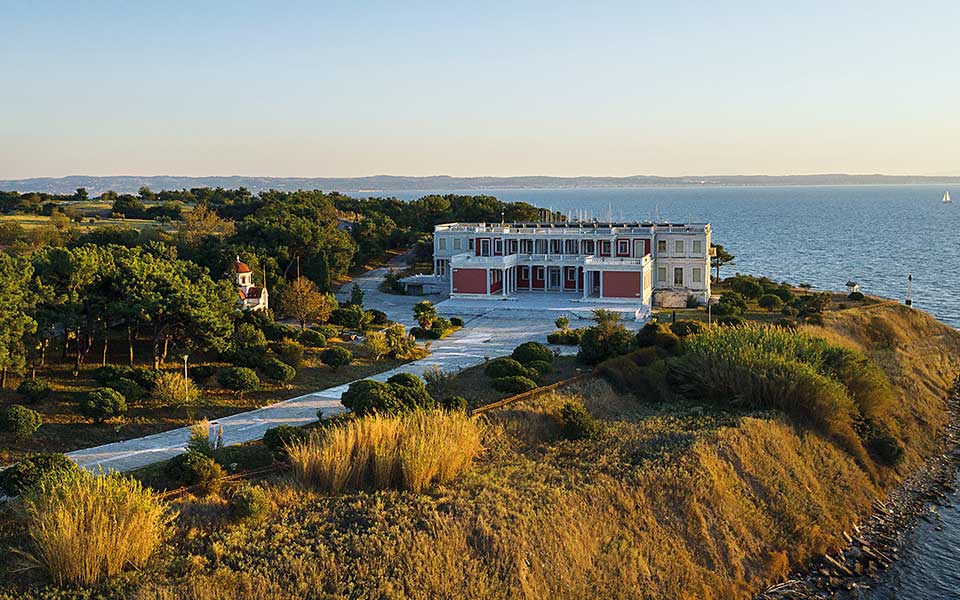
© Konstantinos Tsakalidis
Overall, this particular spot is indicative of Kalamaria’s undeveloped potential. For one, this is the site of the Palataki, or Kyvernio, an impressive protected neoclassical building built in the 1950; it served as a royal residence, and over the decades hosted numerous politicians. Abandoned since 2006, it has been used as a venue for various concerts during the Para Thin’ Alos festival, the municipality’s most important cultural event that takes place in September every year.
And just next door is the former military base of Kodra, established by the Allies during World War I and named after the great fighter of the Macedonian Struggle, Michalis Moraitis (Captain Kodras). In military use until the 1990s, it covers an expanse of 45 hectares featuring 15 historic buildings.
With the exception of the NATO offices in operation here, the only thing that breaks the silence is the organic farmers’ market every Saturday, definitely worth a visit! Farmers from near and far sell their produce from quaint stalls, strictly adhering to all latest health and safety measures.
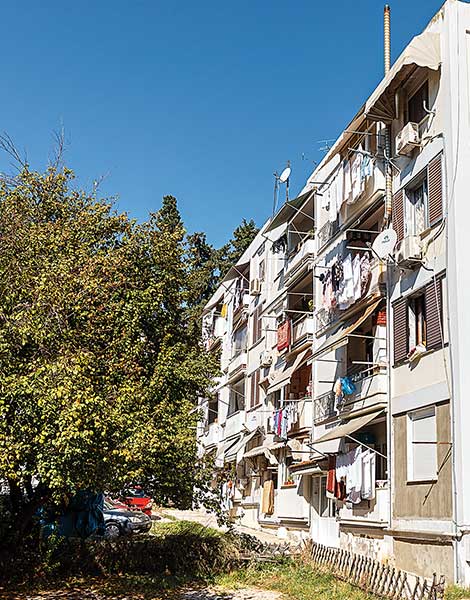
© Konstantinos Tsakalidis
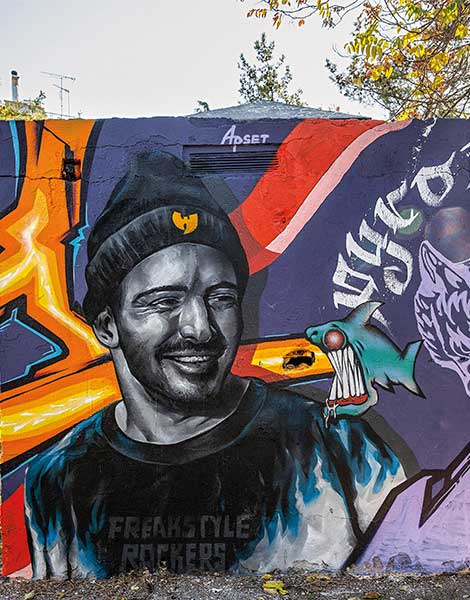
© Konstantinos Tsakalidis
Bewitching Aretsou
All of these things can be found on Kalamaria’s coastal stretch, a place of strange beauty that blends neglect, historical memory, melancholy and a particular kind of modern Greek cosmopolitanism. This is what you feel as you walk along sandy Aretsou Beach, losing yourself as you look at the yachts and fishing boats.
Here, consistent signs of life come from Avra Cinema during the summer, and all year round from the Winter Swimmers’ and Beach Racket Association, where the the sound of balls being struck energetically can be heard near its characteristic blue wooden changing rooms.
Today, it’s hard to imagine that 40 years ago this public beach was the most famous resort in Thessaloniki, where many beloved Greek movies, including “O Atsidas” (“The Wise Guy”) with Dinos Iliopoulos and Zoe Laskari, were filmed.
“The kiosks along the beach were where we saw suntan lotion for the first time,” remembers journalist Evi Karkiti, who was born and raised in Kalamaria and also witnessed the decline of the beach, which began in the late ‘70s.
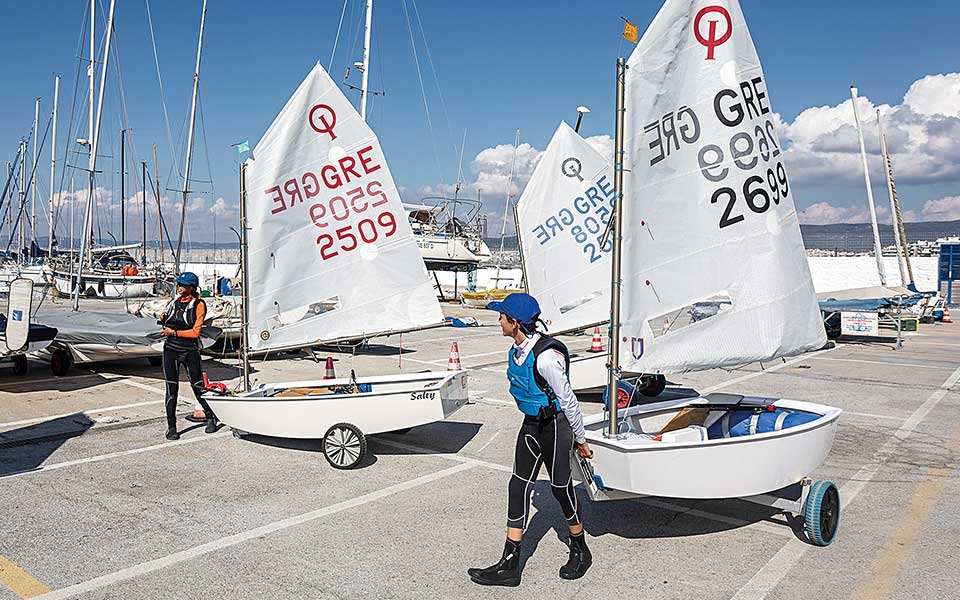
© Konstantinos Tsakalidis
It may no longer be the Saint-Tropez of Thessaloniki, and the crowds that gathered at the Hawaii Club – where the 1960s band The Olympians made their first public appearance – may be a thing of the past, as are the limousines with tinted windows that once lined up outside Hamodrakas, the oldest taverna in the area, but Aretsou still holds an irresistible attraction for visitors.
From coffee with views of the marina, to the sight of the remaining old summer houses (such as the Haralambakis residence that houses the Aperito café-bar) standing in contrast to the new apartment blocks, to the benches lining the sidewalk where people can sit and observe passersby, there’s always something here that appeals.
Nea Krini Beach, further along, is just as bewitching, with fish tavernas each with its own story. “This taverna was named by an American general who came here after the war to supervise the work at Mikra Airport, which had been used by the Germans. Looking at the map and noticing the beach area opposite was called Florida, he jokingly said: ‘Well, if that’s Florida, then this is Miami,’” recounts Dina Tertsi, third-generation owner of the fish taverna called Miami.
Tertsi’s family hailed from Vourla in Smyrna, present-day Izmir. The taverna, which she runs with her sisters, serves delicacies such as her famous seafood lachanodolmades (stuffed cabbage leaves).
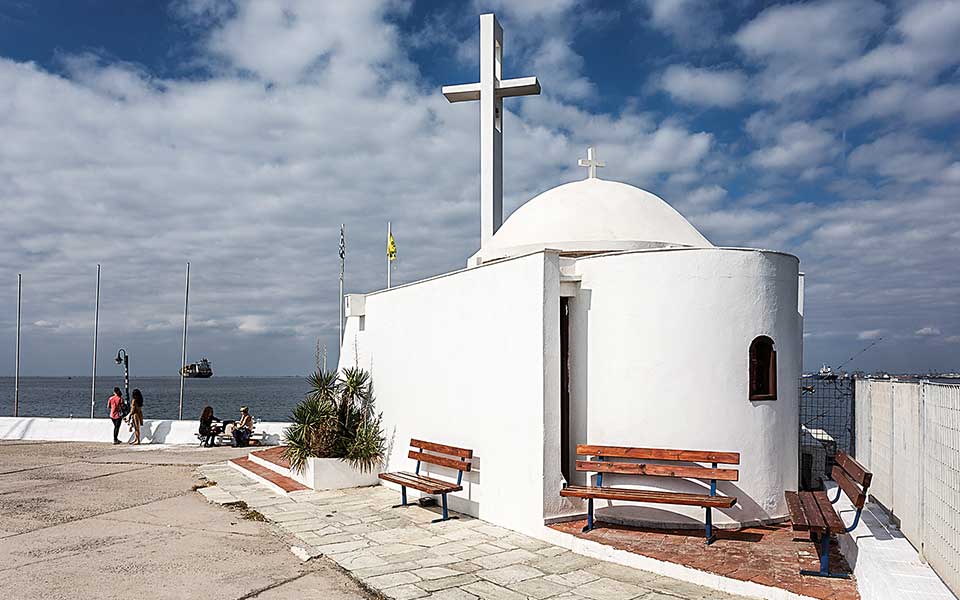
© Konstantinos Tsakalidis
Black Sea refugees
“Even though the population of Kalamaria has changed a lot, the general rule is that the refugees from Asia Minor settled along the coast, while the Pontic [Black Sea] Greeks moved inland,” explains Ariadni Antoniadou, an ethnographer, scientific consultant for Voreadon, Kalamaria’s dance association, and the instigator behind the reenactment of the arrival of the Asia Minor refugees in Nea Krini, a cultural event that takes place in late August or early September, at the little harbor behind the abandoned shell of Panaghia Hospital.
The refugees from the Black Sea region lived in tents in the mud before land was distributed to them and they could begin building houses, at first mainly on or around Kerasountos and Pontus streets (the latter is currently part construction site, thanks to the new metro line).
It’s certainly no coincidence that in this neighborhood, at the end of Hilis Street, the stadium of the Apollon Pontou Football Club is located. First founded as a musical and fitness club for Asia Minor refugees in 1926, the team’s glory days are long in the past.
However, there’s another team that’s left its mark here: the impressive street art, such as the bust of Spinoza, is part of the great heritage left behind by the Skra Ghetto Boys, one of the first street art crews in Greece.
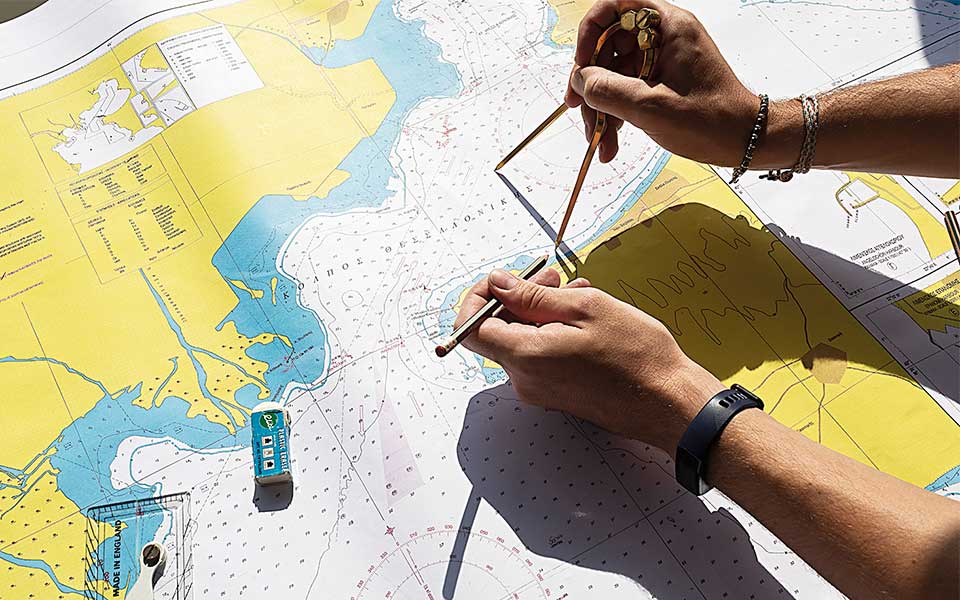
The football grounds adjoin the 1st Middle and High School of Kalamaria, a large complex built in 1965, that includes an indoor gym and theater. The sign it bears (“Trebizond Frontistirio”) reminds passersby that the community first named the school after one of the longest lasting and most important Greek educational institutions in Trebizond.
Further down the same street is yet another Black Sea connection: the Metropolitan Church of the Transfiguration of the Lord, whose original bell tower came from Kars. This is where the city’s most lively artery, Komninon Street, begins.
This thoroughfare, pedestrianized in the early 1990s and renovated in 2014, is full of life from the morning well into the evening. The nyfopazaro (“bride bazaar”) of the ‘70s, when young women took strolls in hopes of catching a worthy suitor’s attention, and would-be grooms littered the street with the shells of the pumpkin seeds they gobbled nervously, has been replaced over time by a more diverse crowd that frequents the new cafés and bars. Now, due to COVID-19, they sit on the benches that line the street instead, exchanging stories muffled by masks.
Another important street, with more shops, is Ioanni Pasalidi, the location of two gastronomic “musts”. The bakery Gounaris dates from 1934, and makes its famous peinirli (a type of pizza boat) with ground mutton, kaseri cheese and heaps of butter. The ice cream shop Themis, which opened in 1957, used to be a popular hangout for the young crowd, with pool tables and foosball.
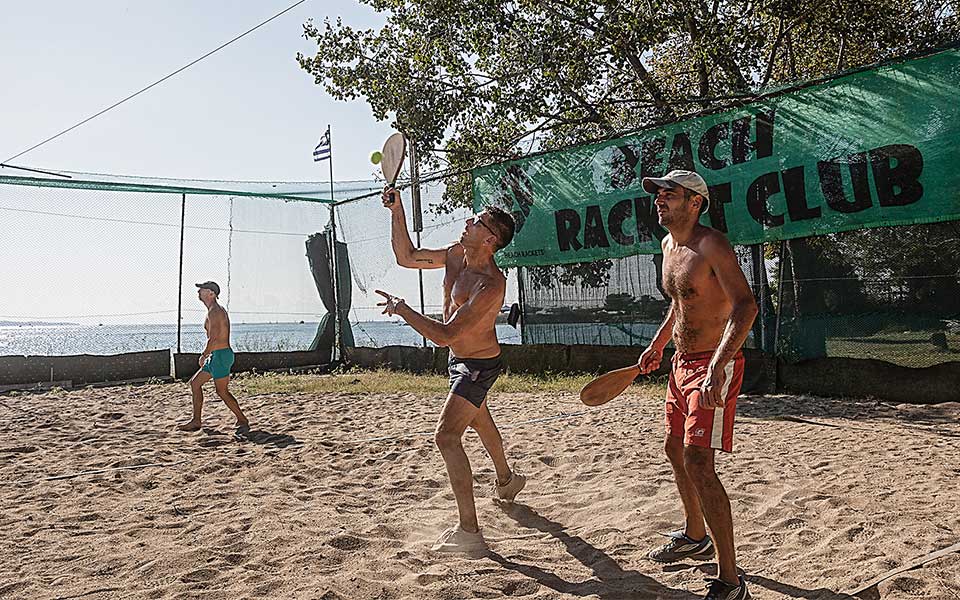
© Konstantinos Tsakalidis
Fragments of History
Kalamaria is a neighborhood defined by its history. In the area of Aghios Panteleimon, I noticed a series of graffiti portraits dedicated to Pyroh, a local creative who recently passed away from leukemia, at the Park of the Lost Homelands. Nearby, some two-story buildings with courtyards, part of the ship-workers’ neighborhood are still standing.
A little further north, in the Votsi area at the intersection of Ethnikis Antistaseos and Aristeidou streets, I came across a memorial to the Jews killed during the Campbell Pogrom. About 220 families who had been moved to the Campbell district following the Great Fire of 1917 were violently expelled by nationalists in 1931. Last February, the state finally fulfilled its duty and erected a memorial.
The Mikra British Cemetery, which was used to inter soldiers killed in battle from 1917 to 1920, is also a historic site.
But perhaps the most striking place in Kalamaria is Finikas, on the eastern side, featuring workers’ housing blocks built in the 1950s. These dilapidated rectangular boxes, with green areas in front of them, remind visitors of neighborhoods from another era, when children played ball in the streets, and the laundry was hung out to dry on small balconies.
It’s as if this neighborhood is resisting contemporary reality, much like Kalamaria was in denial of its multicultural identity for so long. Today, dozens of cultural groups and a few cultural organizations such as the Historical Archive of Refugee Hellenism and the Christos Kalemkeris Photography Museum, whose archives include rich photographic material dating from as far back as 1838, are working to keep the history of this place alive.
Now, it’s time for the state to help preserve this intangible cultural heritage and to provide the necessary impetus for growth and development. But until that happens, at least Kalamaria will continue to have its magical sunsets to lure and enchant visitors.
This article first appeared in the print issue Greece Is Thessaloniki 2020 with the title “The City in the East”. The magazine, along with other past issues, is available for order at our eshop.

